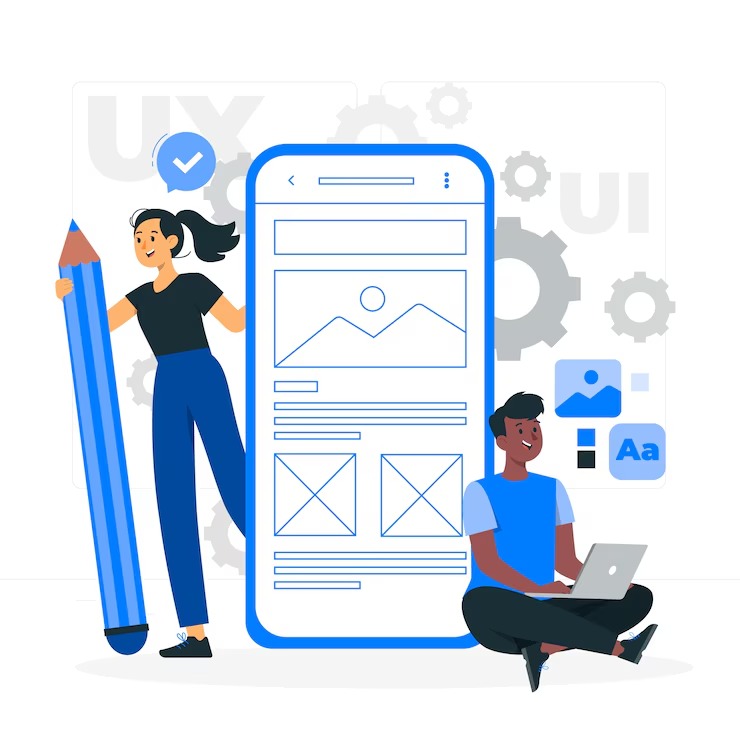Understanding the Importance of UX UI Design Services
In the ever-evolving digital landscape, user experience (UX) and user interface (UI) design have become critical pillars of successful digital products. UX UI design services focus on creating seamless, enjoyable, and engaging interactions between users and digital platforms such as websites, mobile apps, and software applications. A well-crafted UI/UX design can significantly influence user satisfaction, brand perception, and conversion rates. With growing competition in the digital space, businesses are investing heavily in professional UX UI design services to stand out and offer exceptional user journeys.
What Are UX UI Design Services?
UX UI design services encompass a broad range of processes and methodologies aimed at enhancing how users interact with a digital product. UX design involves understanding user behaviors, needs, and motivations through research and analysis to design meaningful and relevant user experiences. It focuses on the overall feel of the experience. UI design, on the other hand, is concerned with the aesthetics and interactivity of the product interface. It includes the design of screens, buttons, icons, typography, and color schemes that users interact with. These two elements work together to ensure that a product is not only functional but also visually pleasing and easy to use.
Core Components of UX UI Design Services
User Research and Analysis: The foundation of any effective UX design is understanding the user. This involves conducting interviews, surveys, and usability tests to gather data about user needs, behaviors, and pain points. Personas and user journey maps are often created to visualize the user’s interaction with the product.
Wireframing and Prototyping: Wireframes are basic visual guides that represent the skeletal framework of a digital product. Prototypes, often interactive, simulate the user experience and functionality of the product. These tools help stakeholders visualize the product early in the development process.
Information Architecture (IA): This refers to the organization and structure of content within a product. A good IA ensures that users can easily find the information they need without confusion. It includes navigation design, content categorization, and labeling.
Visual Design: UI design focuses on creating an appealing interface using elements like color palettes, typography, icons, and images. Visual design not only enhances aesthetic appeal but also guides users through the interface intuitively.
Interaction Design: This involves designing the interactive elements of a product, such as buttons, forms, and transitions. The goal is to make interactions intuitive, smooth, and engaging.
Usability Testing: Before finalizing the design, usability testing is conducted to identify potential issues and areas for improvement. Feedback from real users is invaluable in refining the design for better performance.
Accessibility and Inclusivity: UX UI design services also focus on making digital products accessible to all users, including those with disabilities. This includes adhering to accessibility standards such as WCAG, using contrast ratios, providing keyboard navigation, and including screen reader compatibility.
Benefits of Investing in UX UI Design Services
Improved User Satisfaction: A well-designed UX/UI leads to happier users. When users find a product easy to navigate and aesthetically pleasing, they are more likely to engage with it and return.
Increased Conversion Rates: Intuitive design can guide users towards desired actions, such as signing up, purchasing, or contacting support. This directly impacts conversion rates and business success.
Reduced Development Costs: Identifying and fixing design flaws early in the process is significantly more cost-effective than post-launch fixes. UX UI design services incorporate iterative testing and feedback to minimize expensive changes later.
Stronger Brand Identity: Consistent and thoughtful design reflects professionalism and builds trust. It helps establish a strong brand identity that resonates with users and differentiates the business from competitors.
Higher User Retention: A great user experience keeps users coming back. Retaining users is often more valuable than acquiring new ones, and UX UI design plays a crucial role in retention strategies.
Industries That Benefit from UX UI Design Services
E-commerce: Online shopping platforms rely heavily on user-friendly design to drive sales. Features like easy navigation, quick checkout, and responsive design are essential for a positive shopping experience.
Healthcare: Patient portals, telemedicine apps, and healthcare websites must be intuitive and accessible. UX UI design services ensure that users can easily find information and manage their health online.
Finance and Banking: Fintech apps and websites require secure, efficient, and easy-to-use interfaces. UX design helps in simplifying complex financial tasks for users.
Education and E-learning: Interactive and engaging design is key to effective online learning. UX UI services help in creating platforms that are both informative and user-friendly.
Travel and Hospitality: Booking systems, travel apps, and tourism websites benefit from clear layouts and intuitive navigation that enhance the user journey.
Entertainment and Media: Streaming services, gaming platforms, and content websites need attractive and easy-to-use interfaces to keep users engaged.
Emerging Trends in UX UI Design Services
Dark Mode and Custom Themes: Offering users the option to switch to dark mode or customize themes enhances user comfort and personalization.
Voice User Interface (VUI): With the rise of voice assistants, VUI is becoming an important aspect of UX design. Designing for voice interactions requires a new set of design principles.
Augmented Reality (AR) and Virtual Reality (VR): AR and VR applications demand immersive and interactive UX UI design to create engaging virtual experiences.
Microinteractions: These are small animations or design elements that respond to user actions. They add a layer of delight and feedback, improving the overall experience.
AI-Powered Personalization: AI integration allows products to adapt to individual user preferences, offering a more personalized and efficient experience.
Neumorphism and Glassmorphism: These are modern design aesthetics that combine minimalism with depth, creating a futuristic and appealing interface.
Inclusive Design: There is a growing emphasis on designing for all users, including those with varying abilities, ensuring digital equality and legal compliance.
Choosing the Right UX UI Design Service Provider
Experience and Expertise: Look for agencies or freelancers with a strong portfolio and proven track record. Experience across different industries can be a major plus.
User-Centered Approach: The best UX UI designers prioritize the end-user. They invest time in research and testing to create designs that truly resonate with the target audience.
Collaboration and Communication: Effective communication is vital throughout the design process. Choose providers who value client input and maintain transparency.
Agile and Iterative Process: Design is not a one-time effort. A good service provider follows an iterative process, constantly refining based on feedback and performance.
Tool Proficiency: Modern UX UI designers use advanced tools like Figma, Adobe XD, Sketch, InVision, and Axure. Proficiency in these tools ensures high-quality deliverables.
Post-Design Support: After the design phase, having support during development and post-launch can help address any integration issues or necessary updates.
UX UI Design Process: From Idea to Execution
Discovery Phase: This involves gathering information about the project, understanding user needs, defining goals, and identifying constraints. Stakeholder interviews, competitor analysis, and market research are conducted.
Conceptualization and Planning: Designers create personas, journey maps, and define user flows. This helps in outlining the structure and key functionalities of the product.
Design Phase: Wireframes and prototypes are developed to visualize the product. UI elements are created to bring the prototype to life, ensuring visual consistency and brand alignment.
Testing and Validation: Usability testing sessions are conducted with real users to identify usability issues. Feedback is collected and used to refine the design.
Delivery and Handoff: Once finalized, design files and specifications are handed off to developers. Tools like Zeplin or Figma ensure a smooth transition from design to code.
Post-Launch Optimization: After launch, designers analyze user behavior using analytics tools to identify areas of improvement. Continuous iteration ensures the product stays relevant and user-friendly.
Common Challenges in UX UI Design and How to Overcome Them
Balancing Aesthetics and Functionality: A beautiful design that is hard to use fails its purpose. Designers must strike a balance between visual appeal and usability.
Handling Diverse User Needs: Users may have varying levels of tech-savviness. Inclusive design practices and user segmentation help address different needs.
Designing for Multiple Devices: Responsive and adaptive design principles ensure that the product works seamlessly across desktops, tablets, and smartphones.
Keeping Up with Trends: The digital landscape evolves rapidly. Continuous learning and staying updated with trends is essential for UX UI professionals.
Integrating Feedback Efficiently: Gathering user feedback is easy; implementing it efficiently while maintaining design integrity is the real challenge. Prioritization and iterative improvements are key.
Why UX UI Design Services Are a Worthy Investment
Investing in UX UI design services is no longer optional; it’s a strategic necessity. Whether you’re launching a new product, revamping an existing one, or seeking to improve user satisfaction, professional UX UI design can deliver measurable value. It helps businesses achieve better engagement, stronger brand loyalty, and higher ROI. With user expectations higher than ever, a thoughtful and strategic approach to UX UI design can set a brand apart and create lasting impressions.
Conclusion
UX UI design services are at the heart of digital success. They combine empathy, creativity, and technology to craft experiences that delight users and drive business results. In a world where user attention is limited and competition is fierce, prioritizing excellent design is the smartest move any business can make. By understanding users deeply, designing interfaces that are both beautiful and functional, and continuously iterating based on feedback, companies can build digital products that not only perform but also inspire. Whether you are a startup, enterprise, or agency, embracing top-tier UX UI design services can transform your digital vision into a remarkable reality.





